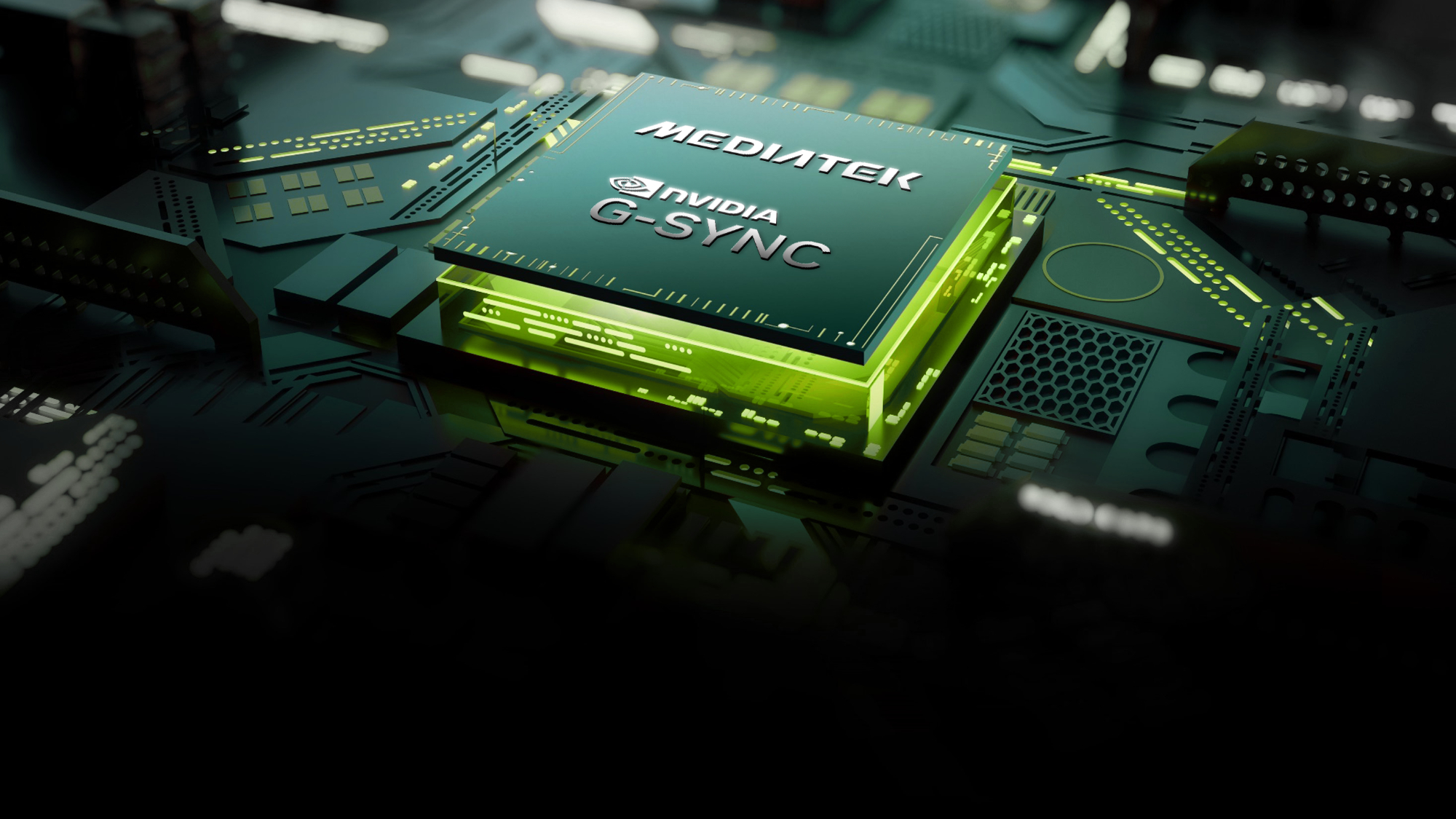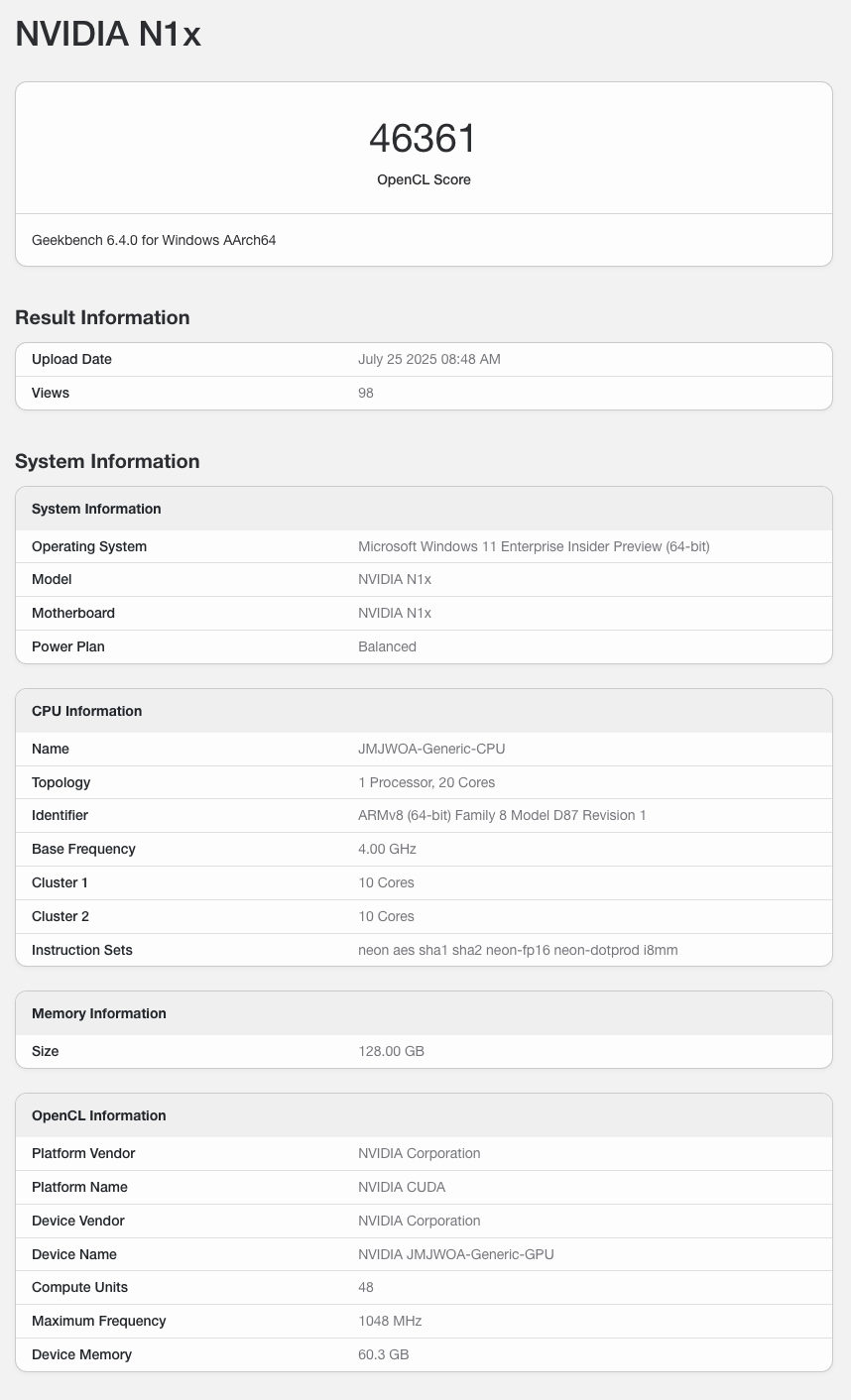Nvidia’s long-rumored and long-delayedN1XSoC has broken cover once again, this time revealing its GPU capabilities through a freshGeekbench OpenCL listing. We’ve seen various CPU-focused leaks surrounding this chip before, but this provides our first genuine look at the GPU. That being said, this isn’t final silicon—it’s an early engineering sample—but the details are enough to show where Nvidia is headed with its first consumer-class ARM SoC for laptops and possibly desktops.
The Geekbench entry confirms a 20-core CPU setup split into two 10-core clusters, built on Nvidia’s Grace architecture. More importantly, it confirms 48 Streaming Multiprocessors (SMs), translating to 6,144 CUDA cores—the exact count as the desktopGeForce RTX 5070. Interestingly, these specs also match Nvidia’sGB10 Superchip, which currently powers theDGX Spark AI mini-PCs, suggesting that N1X might be a repurposed, possibly lower-power version aimed at the mainstream market. After all, they’re both ARM-based chips developed in unison with MediaTek.

Performance, however, is still in the rough. This sample clocked in at a modest 1.05 GHz and scored 46,361 in OpenCL, roughly in the territory of theRTX 2050. The reason is power and frequency limits, which are typical of early prototypes, as well as the absence of dedicated GDDR memory, since the SoC relies on shared LPDDR5X.
Even in this state, the N1X’s iGPU is already outpacing every modern integrated GPU, including Apple’s M3 Max and AMD’s 890M, which top out at around 37,500 in similarbenchmarks. The GPU performance ceiling is higher, given that a fully powered RTX 5070 boosts to 2.5 GHz with a 250W TDP, while the N1X is capped at around 120W for the entire chip.

This isn’t the first time the N1X has appeared on Geekbench.Earlier leaks revealed its CPU performancewas competitive but not earth-shattering, which is to be expected from unfinished drivers and firmware. With the latest listing, Nvidia is signaling a hybrid approach: pairing a Blackwell GPU core array with an ARM-based CPU cluster, aiming for a balance of AI performance, gaming, and efficiency—similar to how AMD’s Strix Halo and Apple’s M-series chips are positioned.
There’s still no launch date in sight. Rumors suggest a Q1 2026 release, possibly timed to coincide with the next wave of AI-focused Windows laptops, asMicrosoft appears to be holdingup on that at the moment. For now, Nvidia’s N1X sits in the shadows, a prototype with the specs of a mid-tier discrete GPU and ambitions to push iGPU performance into uncharted territory.

If Nvidia gives this chip the power and bandwidth it needs, the N1X could be the first ARM-based SoC to seriously challenge x86 giants likeAMDandIntelon high-performance laptops—and maybe even take a bite out of Apple’s lead in the premium AI laptop segment.
Get Tom’s Hardware’s best news and in-depth reviews, straight to your inbox.
FollowTom’s Hardware on Google Newsto get our up-to-date news, analysis, and reviews in your feeds. Make sure to click the Follow button.
Hassam Nasir is a die-hard hardware enthusiast with years of experience as a tech editor and writer, focusing on detailed CPU comparisons and general hardware news. When he’s not working, you’ll find him bending tubes for his ever-evolving custom water-loop gaming rig or benchmarking the latest CPUs and GPUs just for fun.